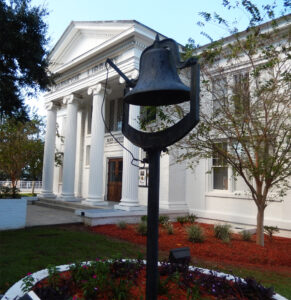
The Air ForceAcademy has announced that its football program will honor the Tuskegee Airmen this Saturday with a special uniform during its game against Navy. The school released images of the uniforms as well as a statement this week.
The uniforms are the 2020 edition of the AirPower Legacy Series uniform. This marks the fifth year for the series at Air Force, which started in 2016.
The belongings of Tuskegee airman Lt. Col. Fred Hutchins, his flight Helmet and bag, are on display at Florida A&M University’s Black Archives museum.
“I appreciated the history or aspect of the museum,” said Tylia White, a third-year nursing student at FAMU.
The Tuskegee Airmen were the first Black military aviators in the U.S. Army Air Corps, a precursor of the U.S. Air Force. Trained at the Tuskegee Army Air Field in Alabama, the airmen flew more than 15,000 individual sorties in Europe and North Africa during World War II.
In 1939, the National Association for the Advancement of Colored People took aim at the military’s segregationist policies. Black newspapers and civic groups around the country began a public campaign to integrate the armed forces.
“The Black Archives is the cornerstone of history on FAMU’s campus. Students were cognizant of the museum’s addition to their experiences while attending FAMU and had grown to value it,” said Leo White, a third-year engineering student at FAMU.
Due to racial discrimination, African American servicemen were not allowed to learn to fly until 1941, when African American college graduates were selected for what the Army called “an experiment” that led to the segregated 99th Fighter Squadron. It trained at an airfield adjacent to Alabama’s Tuskegee Institute.
The experiment involved training Black pilots and ground support members who originally formed the 99th Pursuit Squadron.
The squadron, quickly dubbed the Tuskegee Airmen, was activated on March 22, 1941, and named the 99th Fighter Squadron on May 15, 1942. For every Black pilot, there were 10 other Black civilians, officers and enlisted men and women to provide ground support.
In June 1943, the Tuskegee Airmen entered into combat over North Africa. The Airmen exemplified courage, skill, and dedication in combat, completing over 1,500 missions during the war.
No other escort unit could claim such a record. When the war ended, the Tuskegee Airmen returned home with 150 Distinguished Flying Crosses, Legions of Merit, and the Red Star of Yugoslavia.
The group was deactivated in May 1946 but its success would contribute to the eventual integration of the United States military.
Airman Lt. Col Hutchins, along with many others, will continue to be a part of a long line of heroic men.